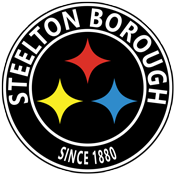We went from being a town called Baldwin to the Borough of Steelton, one hundred and forty years ago this month. An application for the corporation was done on September 5, 1879, with Grand Jury filings which lead to the certificate acknowledgement on January 16, 1880.
About Steelton

Borough Statistics
6263
Residents
6.2%
Under 5 Years Old
47.1%
Male Citizens
28.1%
Under 18 Years Old
52.9%
Female Citizens
10.5%
Over 65 Years Old
History
When a Post Office was required for the village of Baldwin, originally named after Matthew Baldwin, founder of the Baldwin Locomotive-Works, it was necessary to have it established under a different name as there was already a town and a Post Office named Baldwin in Pennsylvania. The name chosen was “Steel Works” and the Post Office was established under that name in 1871. This name caused confusion as it was often mistaken for the steel plant and not the Post Office. The name of the Post Office was changed to Steelton in August of 1879.
Incorporation of the Borough of Steelton was granted on January 26th, 1880 upon petition of seventy-five residents. At the time of incorporation, the population of Steelton was about 2,500.
Pennsylvania Steel Company, later sold to the Bethlehem Steel Company, has controlled much of our history including our name. In the heyday of the steel industry, Steelton was home to over 16,000 residents, representing 33 different ethnic groups. The Steelton plant was the first mill in the United States dedicated exclusively to the process of making steel. Its construction in 1866 and the growth of the industry drew a diverse, immigrant workforce from England, Ireland, Germany, Italy, Eastern Europe, and Mexico in the late 19th and early 20th centuries. A large black population migrated from the southern United States during this period as well.
The diversity of denominations stemmed largely from the different religious beliefs and language differences of the many ethnic groups who settled in Steelton. The various ethnic groups settled in different sections of town, in part feeling more comfortable with neighbors whose lifestyle, language and cultures mirrored their own. They established their own places of worship and social organizations to strengthen kinship ties and maintain a sense of connection to their homeland.
Steelton at one time had several elementary and secondary schools, but declining enrollment and the need for a more modern facility led to a merger with the Borough of Highspire’s school district in 1956. Prior to and since the merger, with a fraction of the enrollment of other schools, the Steamrollers have repeatedly won regional and state-wide championships in football and basketball.
The history of Steelton is not complete without the mention of the West Side. Once a self-supporting community, it had grocery stores, a brewery, boardinghouses, churches, a fire company, a lumberyard, a flour mill, coal yard, elementary school, hotel and 3,000 residents. Although renewed after the flood of 1936, a flood stage of 32.95 feet in 1972 insured the demise of the West Side. Still, when asked where they were born and/or raised, many will say, “I’m from the West Side,” as if to imply that such a location exists other than in their heart.
Front Street has always been the town’s social center. Churches have always been a vital part of the fabric of Steelton’s residents. Ethnic and cultural organizations have long met the social needs of their members. Through good times and hard times, our community continues to survive.
